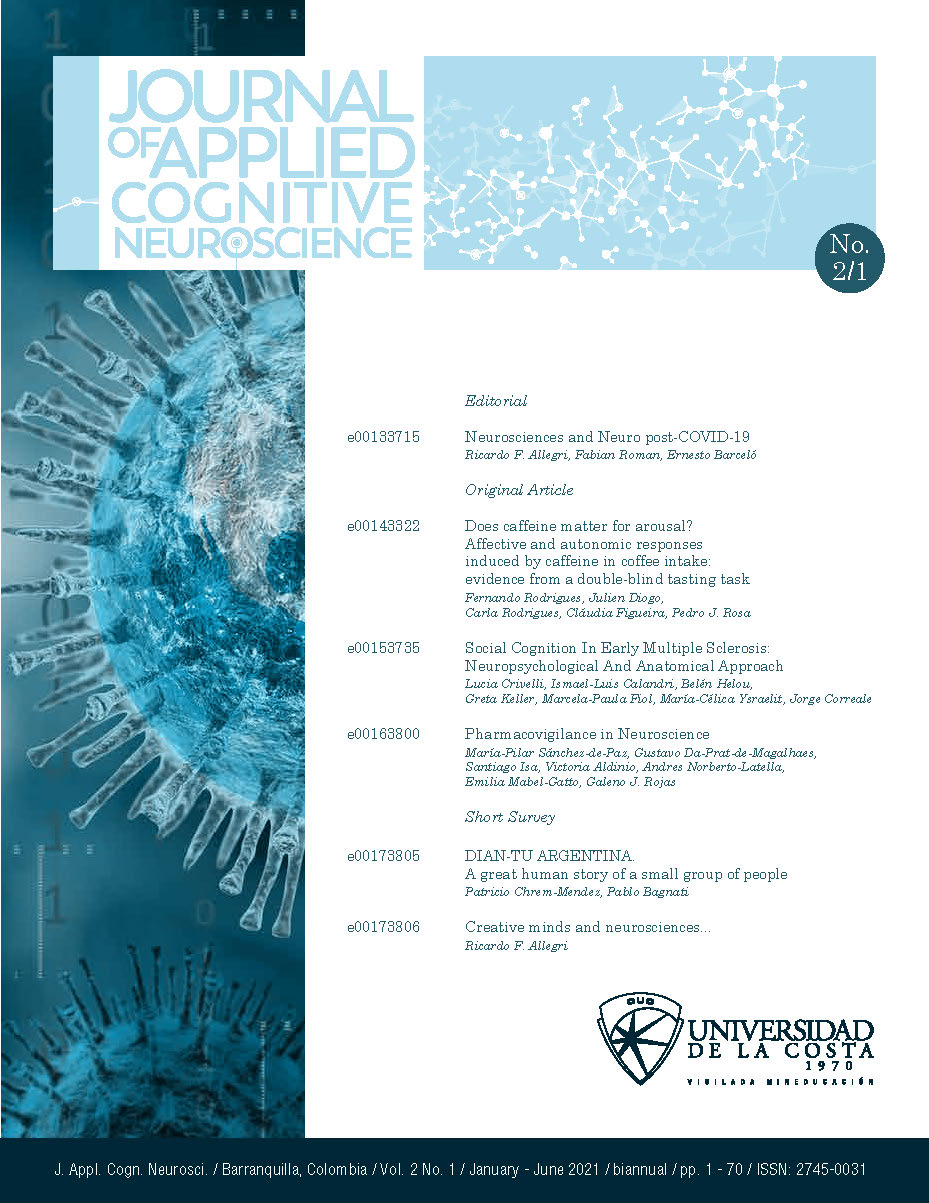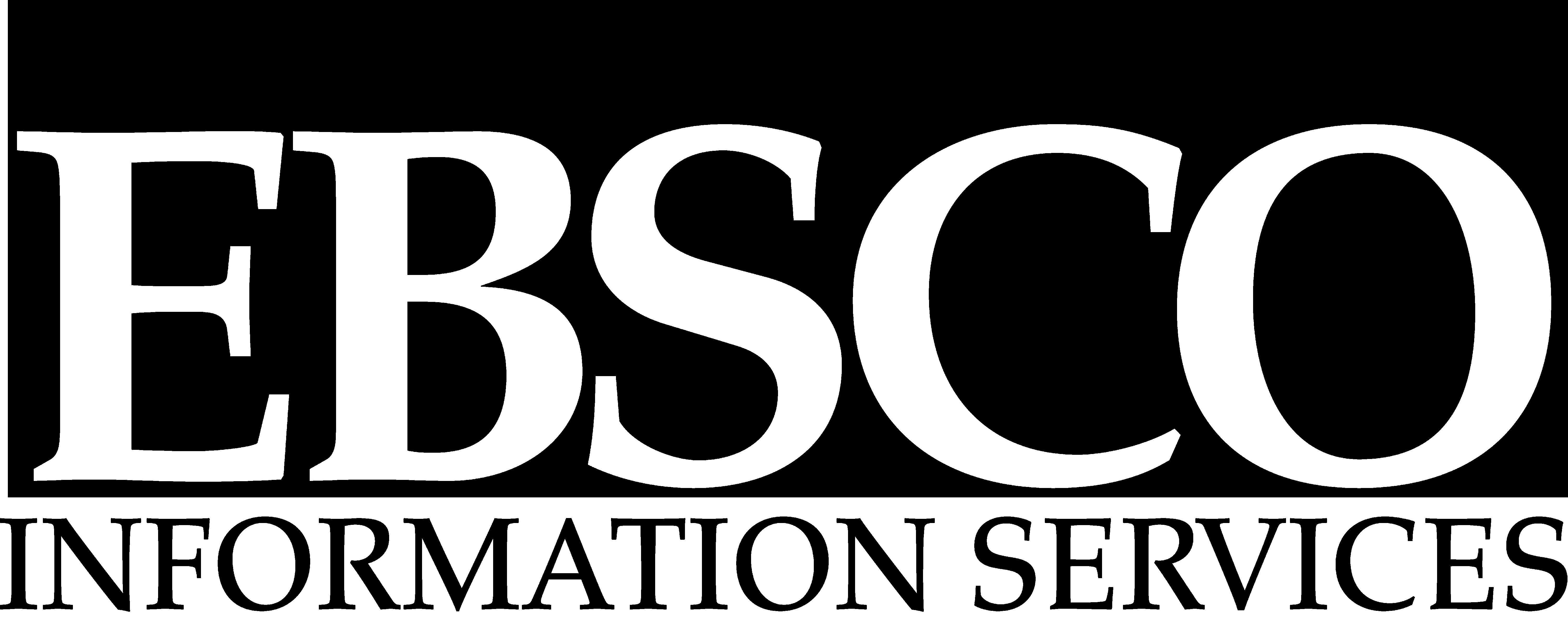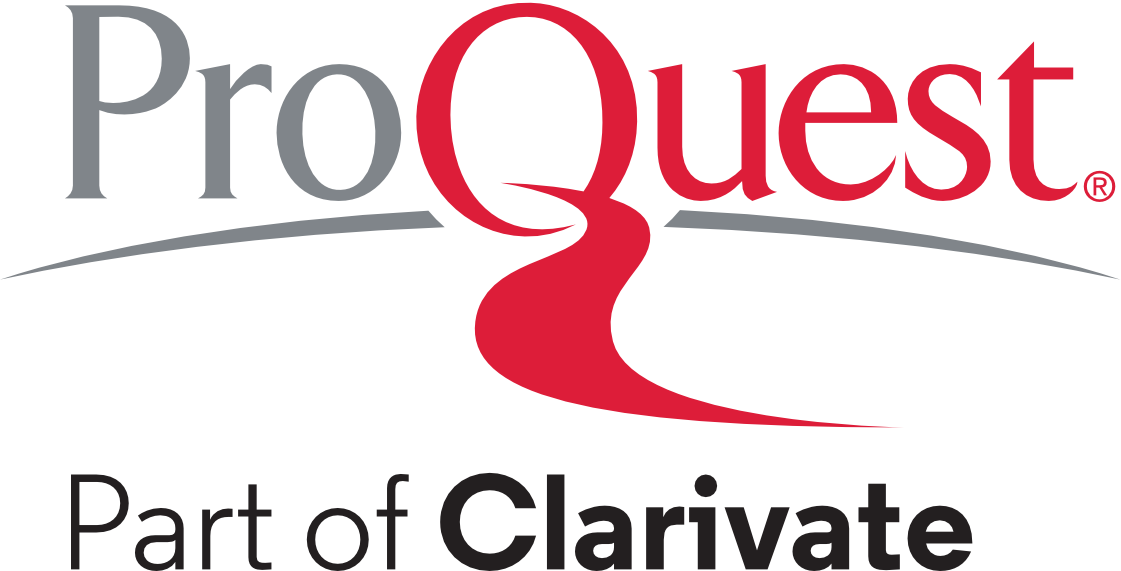Pharmacovigilance in Neuroscience
Farmacovigilancia en neurociencia
DOI:
https://doi.org/10.17981/JACN.2.1.2021.04Keywords:
Pharmacovigilance, Epidemiology, Adverse reactions, Drugs, Neurology, PharmacologyAbstract
Background: Adverse drug reactions (ADRs) have a high impact on morbidity and mortality of the population, becoming a public health issue. Studying and publishing about these is referred as pharmacovigilance.
Objective: To describe and compare the adverse reactions produced by drugs of nervous system action (CNS-D) and neurological ADRs produced by drugs of systemic action (Sys-D). To further develop the need of reporting adverse reactions.
Methods: An observational, cross-sectional, retrospective study performed on a database of neurological consultations which took place at the Neurology department. Patients meeting the inclusion criteria were selected and divided into two groups: Sys-D and CNS-D. Demographic and neurological variables were analyzed. Parametric and non-parametric statistics were used according to distribution. The Naranjo Algorithm (NA) was used to define causality.
Results: 71 ADRs were described, from which 63.38% (n=45) were produced by CNS-D, especially antiepileptics by 47% (n=21) and psycholeptics by 44%. Of the total, 36.62% (n=26) were caused by Sys-D, such as antineoplastics (n=9) and antibiotics (n=9), being Cefepime the most frequent. The diagnosis of ADRs caused by a Sys-D was delayed prolonging hospitalization (p 0.05) due to a lower NA score (p 0.003) compared to the CNS-D group.
Conclusion: Multiple frequently used drugs of systemic action, such as antineoplastics and antibiotics, generate neurological adverse effects. From our analysis, it was presumed that the suspicion of a neurological ADR caused by these drugs was scarce, thus causing a higher morbidity for the patient.
Downloads
References
Bignone, I. y Schiaffino, S. (2016). Manual de Buenas Prácticas de Farmacovigilancia. [1a ed.]. Buenos Aires: Ediciones Farmacológicas.
Bolaños, R. (Coord.). (2016). Psicotrópicos y estupefacientes. Buenos Aires: Administración Nacional de Medicamentos, Alimentos y Tecnología Médica. Buenos Aires: ANMAT. Recuperado de
http://www.anmat.gov.ar/ssce/Libro-psicotropicos-estupefacientes.pdf
Chaio, S.; Toibaro, J.; Valicenti, P. & Saidón, P. (2013). Reacciones adversas medicamentosas y errores de prescripción: Morbi-Mortalidad. Medicina, 73(2), 111–118. Recuperadode
http://www.scielo.org.ar/pdf/medba/v73n2/v73n2a03.pdf
Edwards, R. & Aronson, J. (2000). Adverse drug reactions: definitions, diagnosis, and management. Lancet, 356(9237), 1255–1259.
https://doi.org/10.1016/S0140-6736(00)02799-9
Grill, M. F. & Maganti, R. K. (2011). Neurotoxic effects associated with antibiotic use: management considerations. British Journal of Clinical Pharmacology, 72(3), 381–393.
https://doi.org/10.1111/j.1365-2125.2011.03991.x
Lazarou, J.; Pomeranz, B. & Corey P. (1998). Incidence of adverse drug reactions in hospitalized patients. A meta-analysis of prospective studies. JAMA, 279(15), 1200–1205.
https://doi.org/10.1001/jama.279.15.1200
Martino, G.; Rojas, G.; Sánchez, M. P.; Isaa, S.; Bres, M.; Camino, M. V..; Merchán, X.; Aldinio, V.; Parisi, V.; Persi, G.; Pereira, N. & Gatto, E. (2019). Seguridad de fármacos antineoplásicos e inmunomoduladores aplicados a la neurología. Neurolargía Argentina, 11(3), 136–144.
https://doi.org/10.1016/j.neuarg.2019.03.001
Naranjo, C. A.; Busto, U.; Sellers, E. M.; Sandor, P.; Ruiz, I.; Roberts E.A.; Janecek, E.; Domecq C. & Greenblatt, D. J. (1981). A method for estimating the probability of adverse drug reactions. Clinical Pharmacology and Therapeutics, 30(2), 239–245.
https://doi.org/10.1038/clpt.1981.154
Orta, I. A.; Garcia, O.; Triolet, A. T.; Gómez, C. & Ruiz, K. (2008). Reacciones adversas a medicamentos en una unidad de terapia intensiva. Revista Electrónica de Biomedicina, 2, 10–18. Disponible en
http://biomed.uninet.edu/2008/n2/alfonso.html
Ponte, M. L.; Ragusa, M.; Armenteros, C. & Wachs, A. (2013). Relevancia de la farmacovigilancia hospitalaria en la práctica médica actual. Medicina (Buenos Aires), 73(1), 35–38. Recuperado de
http://www.scielo.org.ar/pdf/medba/v73n1/v73n1a07.pdf
Rattagan, M. L.; Lisei, D.; Rojas, J. G.; Persi, G.; Parisi, V.; López , M.; Da Prat, G.; Bres M. & Gatto, E. (2016). Uso de psicotrópicos y carga sedativa en pacientes adultos con y sin demencia. Vertex, XXVII(129), 332–338. Disponible en
http://www.editorialpolemos.com.ar/vertex129.php
República de Argentina. Ministerio de Salud. (10 de septiembre de 2012). Buenas practicas de farmacovigilancia. [Disposición n° 5358]. Boletín Nacional: 23-Ene-2013. Disponible en
https://www.argentina.gob.ar/normativa/nacional/disposici%C3%B3n-5358-2012-207727
Rojas, G.; Demey, I. & Arizaga, R. L. (2013). Medicamentos utilizados para trastornos cognitivos. Análisis de un millón y medio de prescripciones en la Argentina. Medicina (Buenos Aires), 73(3), 213–223. Recuperado de
http://www.scielo.org.ar/pdf/medba/v73n3/v73n3a03.pdf
Sauro, K. M.; Quan, H.; Sikdar, K.; Faris, P. & Jette, N. (2017). Hospital safety among neurologic patients: A population-based cohort study of adverse events. Neurology, 89(3), 284–290.
https://doi.org/10.1212/wnl.0000000000004111
VNM. (s.f.). Vademecum Nacional de Medicamentos. Buenos Aires: ANMAT. Disponible en
http://anmatvademecum.servicios.pami.org.ar/index.html
WHO. (2010). International Statistical Classification of Diseases and Related Health Problems 10th Revision. Sweden: CDC. Available:
http://apps.who.int/classifications/icd10/browse/2010/en
WHO. (1999). Perspectivas políticas de la OMS sobre medicamentos: La farmacovigilancia: garantía de seguridad en el uso de los medicamentos. [WHO/EDM/QSM/99.1]. Ginebra: OMS. Disponible en
https://apps.who.int/iris/handle/10665/65892
WHO/Centre for Drug Statistics Methodology. (2021). The Anatomical Therapeutic Chemical (ATC) classification system. [Online]. Available:
https://www.whocc.no/atc_ddd_index/
WHO. The Uppsala Monitoring Centre. (2001). Vigilancia de la seguridad de los medicamentos. Guía para la instalación y puesta en funcionamiento de un Centro de Farmacovigilancia. Sweden: UMC. Available:
http://www.essalud.gob.pe/ietsi/pdfs/informacion_tecnica/OMS_guia_farmacovigilancia.pdf
Published
How to Cite
Issue
Section
License
Copyright (c) 2021 Journal of Applied Cognitive Neuroscience

This work is licensed under a Creative Commons Attribution-NonCommercial-NoDerivatives 4.0 International License.
You are free to:
- Share — copy and redistribute the material in any medium or format.
- The licensor cannot revoke these freedoms as long as you follow the license terms.
Under the following terms:
- Attribution — You must give appropriate credit, provide a link to the license, and indicate if changes were made. You may do so in any reasonable manner, but not in any way that suggests the licensor endorses you or your use.
- NonCommercial — You may not use the material for commercial purposes.
- NoDerivatives — If you remix, transform, or build upon the material, you may not distribute the modified material.
- No additional restrictions — You may not apply legal terms or technological measures that legally restrict others from doing anything the license permits.


 English
English
 Español (España)
Español (España)










